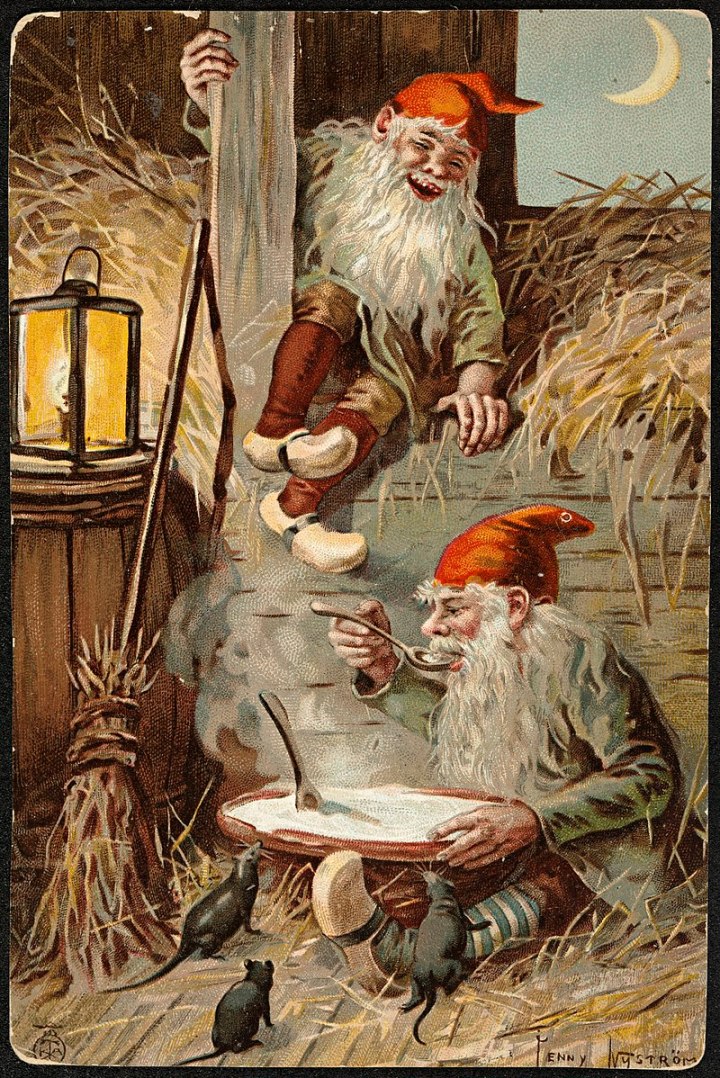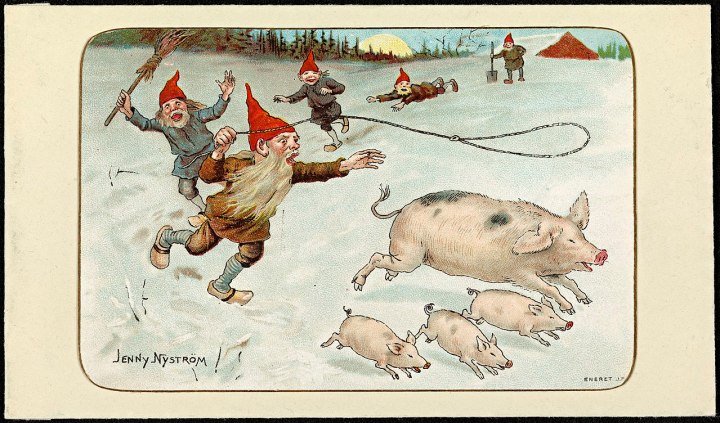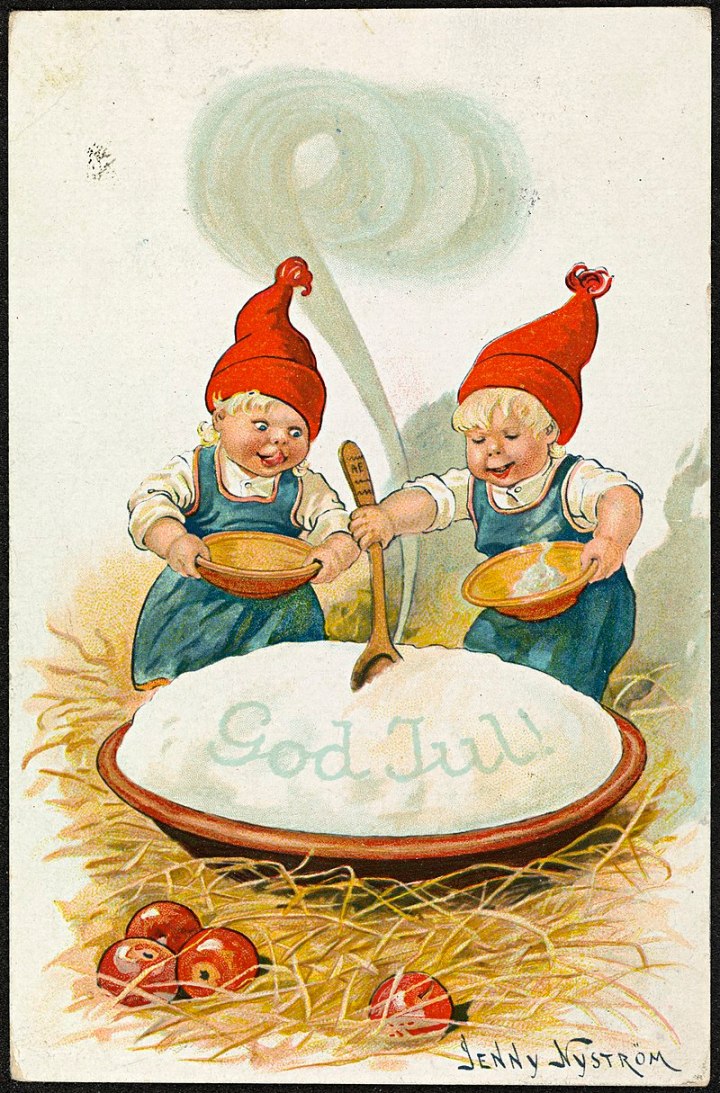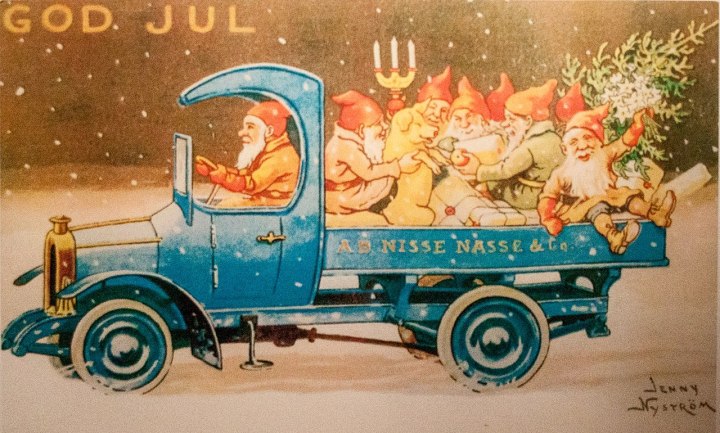I’ve had a lot of fun researching my #Blogmas posts this past week. I had to hit the ground running as it was a spur of the moment decision to participate and I had no planned posts! My first port of call was to Wikimedia Commons, a site I use for free photos when I haven’t taken my own snaps to illustrate a blog post. These pictures are usually in the public domain.

I was inspired to search for Christmas cards as I knew I had photographs to share of my great grandmother’s Christmas card that my grandfather sent from the battlefields of World War One. I’ve written about antique postcards a few times on my blog and they are usually well received and fun to write pieces. I anticipated that Christmas card/postcard articles could be a running theme throughout #Blogmas.

And the results of my searches to date? Two articles on Christmas cards dated 1900 – 1910. You can read them here and here.

And so to today’s selection. I’ve chosen a gorgeous collection of Christmas images from prolific Swedish artist Jenny Nyström (1854 – 1946). Frequently represented in her artwork is the image of a gnome-like character, the jultomte, from Swedish folklore.

The example above shows an earlier representation of Nyström’s tomte, they’re slimmer and more gnome-like than the rotund image of Father Christmas. Her humour shows through as the hapless group chase a runaway sow and her piglets. Pigs are a popular symbol in Scandinavia and it is believed to be because they epitomise fertility and are guardians of the homestead.

There are similar manifestations of mythological people across Scandinavian culture. The jultomte (or tomte, tomtar if plural) has merged into a Father Christmas/Santa Claus character, whilst retaining the elements of his Scandinavian background. Traditionally, the tomte, along with his side-kick a julbocken (yule goat) will deliver presents on the night of Christmas Eve.

It is traditional to leave tomtar bowls of warming porridge served with butter as thanks for the gifts they deliver. Not quite the British glass of sherry and mince pie, but in snowier climes, porridge will do the trick!

Jenny Nyström was born in Kalmar, Sweden and moved to Gothenburg with her family in 1863. In 1869, she began studying at the Gothenburg Museum Art School and it was her tutor here that inspired her to paint pictures of the fabled tomte. In 1873 Nyström began studying at the Academy of Fine Arts Stockholm and in November 1882 she travelled to Paris and enrolled at the Académie Colarossi.

In 1887, after her studies, she settled in Sweden and married Daniel Stoopendaal, at the time he was a medical student. Sadly, he developed tuberculosis and was unable to finish his studies. Her talent as an artist and illustrator was used to support him and their son, Curt. She illustrated children’s books and historical novels, magazine covers, newspaper articles and was also contracted to produce greetings cards.
God Jul!
All images from Wikimedia Commons
Source:
https://skbl.se/en/article/JennyNystrom


The paintings are very unique and interesting.
LikeLiked by 2 people
These are lovely! I do particularly like the last one of them all sat in the truck 🙂
LikeLiked by 1 person
These are wonderful! Thanks for sharing and researching.
LikeLiked by 2 people
Thanks for your comment! Aren’t they fun?
LikeLiked by 1 person
So very interesting and beautiful.
LikeLiked by 1 person
Really cute images! I like knowing the stories behind the art and the artist.
LikeLiked by 2 people
You wouldn’t necessarily think that they were approximately 100 years old. They are cute.
LikeLiked by 1 person
Goats and pigs instead of reindeer? This makes NO sense. ESPECIALLY in Scandinavian countries.
LikeLiked by 2 people
We’re talking about flying reindeer and a man dressed in red who delivers presents to children, inside their locked homes, all over the world in a matter of hours. . . There’s a heck of a lot that makes no sense everywhere!
LikeLiked by 3 people
They’re lovely. I’ve been to Klamath and Gothenburg so that was a nice little story for me
LikeLiked by 1 person
They are beautiful. I love stuff like this, the history of myth and oral tradition, what the people believed as opposed to what battles were won and lost or what the kings were wearing.
LikeLiked by 2 people
I love these old European paintings, so whimsical.
LikeLiked by 2 people